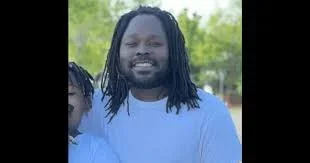Cat on a Hot Tin Roof: Big Daddy’s Pork Chop Recipe 🥁🥁🥁🥁🥁
/Year Released: 1958
Directed by; Richard Brooks
Starring: Elizabeth Taylor, Paul Newman, Burl Ives, Judith Anderson
(PG, 108 min.)
Genre: Classics, Drama
Brick Pollitt: What is the victory of a cat on a hot tin roof?
Maggie Pollitt: Just stayin' on it, I guess....as long as she can.
If you have never seen this steely and sensual classic starring Paul Newman and Liz Taylor, now is the time. Taylor is at her voluptuous best and Newman never better as her self-loathing husband who ignores all her entreaties for love.
This screen adaptation of Tennessee William’s play was a hit with both critics and the public, although both Newman and the playwright were against this more cheerful and sanitized version of the original play. The undercurrent of Brick’s (Paul Newman) homoerotic feelings toward his best friend, Skipper, is barely hinted at in the film adaptation. It did come to the screen in 1958, so that was pretty much par for the course back then. At least they were creating movies out of great literature instead of comic books and old TV programs, so this critic is not too distressed
One critic who actually saw the underplaying of homosexuality as an asset:
…you can't watch it now without being aware of the way in which the issue of homosexuality has been censored for the screen. Brick, the drunk and washed-up ex-football star played by Newman, has very clearly failed to come to terms with his sexuality and his real feelings for Skipper, the old football buddy who died after an ambiguous accident.
Homosexuality is everywhere and nowhere in Cat on a Hot Tin Roof. And perhaps that unspokenness is realer than the play. –Peter Bradshaw
In other words, the film echoes society’s inability to face those realities straight on, just as Brick cannot.
This was a breakout performance for the young and lovely Elizabeth Taylor, but Different Drummer thinks the more subtle performance from Paul Newman is superior. And it’s not just because of his mesmerizing blue eyes, which by the way– along with Elizabeth Taylor’s violet ones– was why they filmed it in Technicolor instead of the proposed black and white.
It is because Newman’s Brick says everything by saying nothing, while Taylor’s Maggie the cat is a bit overblown and artificial, vamping up and down, full of sound and fury.
Burl Ives, reprising his role of Big Daddy from the earlier stage play, is in his element, and as always, his presence fills the screen. Aloof, and harsh, full of bluster and sometimes-downright cruelty, he is nonetheless dogged and courageous.
Particularly when he decides to confront his son about the troubles in his marriage and his obvious alcoholism:
Dreamin' and drinkin' your life away. Heroes in the real world live twenty-four hours a day, not just two hours in a game. Mendacity, you won't...you won't live with mendacity but you're an expert at it. The truth is pain and sweat and payin' bills and makin' love to a woman that you don't love anymore. Truth is dreams that don't come true and nobody prints your name in the paper 'til you die...The truth is, you never grow'd up. Grown-ups don't hang up on their friends...and they don't hang up on their wives...and they don't hang up on life. Now that's the truth and that's what you can't face!
That scene between father and son takes place in the cellar of the house, cluttered with assorted statues from a long ago European trip and buying spree. Along with them are scattered trophies from Brick’s days of glory with a life-sized picture of him in his football uniform. They are scattered like bones in some subterranean catacomb, which by the way, is a very Jungian place for this atonement with the father, for those of you into that angle.
Forcing his son to face the truth and pain of life, Big Daddy models it in his stoic acceptance of the cancer diagnosis that was originally kept from him. That, too, was the practice at the time for many doctors and family members.
When the horrible pain strikes like a bullet in his gut, he refuses morphine to dull it.
I'm not gonna stupify myself with that stuff. I wanna think clear. I wanna see everything and I wanna feel everything. I won't mind goin'. I've got the guts to die. What I want to know is, 'Have you got the guts to live?'
***
And if this family is not dysfunctional enough for you as is, welcome to a set of kiddos that multiply Ransom of Red Chief ‘s loathsome behavior by a factor of 5. They are the ever-expanding brood of Brick’s lawyer brother, whose not too bright wife thinks obnoxious concerts by her band of brigands will win Big Daddy to their side in deciding the estate. And she is not too subtle in her aspirations, either:
Mae Flynn Pollitt: [about her children] They're all Pollitts, I'm proud to say, every one of 'em. And I know that Big Daddy's just as proud as we are knowin' there's a whole dynasty of his flesh and blood waitin' to take over.
Of course, Big Daddy has no use for them or for his obedient son, and lights up only when Maggie is in his presence. And his loud, rude, and curt dismissals of the brood’s persistent annoyances are completely satisfying.
Take a break from the escapism usually filling our screens and take a walk on the wild side in the company of some tremendous actors, personalities, and one of America’s finest playwrights. You won’t regret it.
–Kathy Borich
🥁🥁🥁🥁🥁
Trailer
Film-Loving Foodie
Different Drummer has taken her recipe from a wonderful book called Dinner with Tennessee Williams that “examines the life of Williams and just how important the bacchic pleasures of food and drink were to the man Williams was and the writer he remains.”
Long before it was common, Williams phonetically captured the cadences of his characters: “He ate like a hawss,” as Big Mama said of Big Daddy with pride and awe in Cat on a Hot Tin Roof, showing not only how Williams envisioned his work aloud, but the nearly alarming seriousness by which good health is measured. Williams had a tremendous focus on food in his work, and (in his book) Gilbert’ makes that connection clear. –Anna Purdy
Of course, this is no easy recipe. It is not for faint at heart cooks or eaters. But even if you don’t make or indulge on this gastromonic pleasure, just reading about is a feast itself.
Big Daddy’s Braised Double-Cut Pork Chops with Coca-Cola, Bourbon, Molasses, and Granny Smith Apples
Ingredients
6 double-cut pork chops Salt and pepper
2 cups flour, seasoned
1/2 cup olive oil
1 large onion, sliced
2 cups bourbon
4 cups Coca-Cola
2 cups apple juice
1 tablespoon minced garlic
3 tablespoons light soy sauce
2 tablespoons Steen’s Molasses
2 teaspoons Tabasco or Crystal Hot Sauce
2 cups demi-glace
2 tablespoons chopped fresh thyme
1 teaspoon chopped fresh rosemary
1 cup beef stock, if necessary
5 granny Smith apples, cored and quartered
Directions
Season chops with salt and pepper and then dust in seasoned flour. Sear chops in hot oil in an ovenproof pan until they turn a light brown, about 2 minutes on each side, and remove to a plate. Carefully pour off excess oil from the pan and then add the onion and saute for 2 minutes. Return the chops to the pan and deglaze with the bourbon, allowing the pot liquor to reduce by two-thirds.
Add Coca-Cola, apple juice, garlic, soy sauce, molasses, Tabasco, demi-glace, thyme, rosemary, and salt and pepper. While cooking, take a brush and baste the chops every 5 minutes or so. Braise in an oven, uncovered, at 450 degrees F for 8 minutes. If needed, add stock or water if the “pot liquor” reduces too quickly. Reduce heat and cook at 350-400 degrees F for 20 minutes; turn the chops. Cook for an additional 20 minutes and then turn again. Add apples and cook an additional 20 to 40 minutes, until the meat is almost falling off the bone. Serve.

















